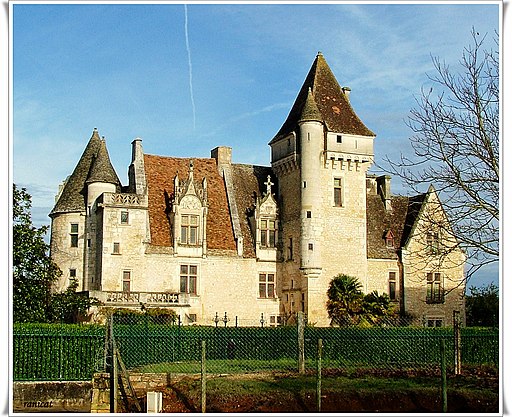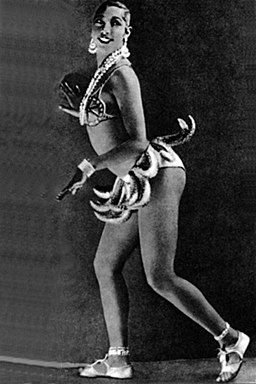This week our focus for Black Lives Matter is Josephine Baker. She was a singer, dancer, spy and activist. Her story has a bit of it all. Read along to learn more about her amazing life and why it matters to us all.
 |
| Josephine Bakker in Amsterdam, 1954 |
Josephine was born Freda Josephine McDonald on June 3, 1906 in St. Louis, Missouri. Her parents were Carrie McDonald and Eddie Carson. Eddie was a vaudeville drummer and abandoned his family shortly after Josephine's birth. Carrie was a washerwoman who had given up her dreams to be a music hall dancer. Carrie remarries and has more children later. She grew up poor. At age 8, Josephine got jobs cleaning and babysitting in wealthy white families homes. She often was treated poorly there. When she couldn't find odd jobs she would dance in the street for money.
She returned to school for a couple of years but ran away from home at the age of 13. She got a job as a waitress at the Old Chauffer's Club. She married a man there named Willie Wells but the marriage only lasted a couple of weeks. At the age of 15 she joined an African American theatre troupe. During this time she married Willie Baker in 1921. She dropped her first name and took his last name and became Josephine Baker. Even after divorcing him she decided to keep his name. She married twice more in her life. Since she did not have to depend on a man financially she tended to leave relationships when they got tough.
Her career as a dancer in vaudeville shows took off. She eventually moved to New York City.
In 1925 she went to Paris to perform in La Revue Nègre at the Théâtre des Champs-Elysées. The French audiences loved her. She performed the Danse Sauvage with her dance partner, Joe Alex. She only wore a feather skirt. The following year she performed at Folies Bergère in the La Folie du Jour. In this performance she wore a skirt made out of 16 bananas and not much else. It was known as the girdle of bananas and became legendary.
Josephine soon became one of the most popular and highest paid performers in Europe. She received over 1,000 marriage proposals and had admirers like Pablo Picasso, Ernest Hemmingway, and E.E. Cummings. She was given nicknames like Black Venus and Black Pearl. In 1930 Josephine sang professionally for the first time and got singing parts in two movies. She used the money she made to purchase an estate which she called Les Milandes. It was in the southwest of France. She paid to have her family moved from St. Louis to this new estate.
 |
| Chateau Les Milandes by Amanda Read / CC BY-SA |
In 1936 Josephine returned to the United States hoping to become popular in her home country. She however was met with racism and quickly returned to France. Upon returning to France she married for a third time. This time it was to Jean Lion in 1937. This marriage enabled her to become a French citizen. She was happy to be a citizen of a country who embraced her and her performances.
When World War II broke out, Josephine did many different jobs. She worked for the French Resistance. She would pass on information she overheard at her performances in front of the Nazis. She transported the secrets by writing in invisible ink on her sheet music and at some times in her underwear. She also performed for the troops in Africa and the Middle East and worked for the Red Cross during the occupation of France. At the end of the war she was rewarded two of the highest French honors for her work during the war.
 |
| Josephine Baker 1948 from Harcourt Studios |
In 1947 Josephine married French orchestra leader Jo Bouillon. In the 1950s and 1960s she returned to the United States ready to fight the discrimination she faced there. She refused to perform in front of segregated audiences. She forced the club owners to integrate for all of her shows. Her work was recognized by the NAACP, and she was one of the only women to speak at the March on Washington for Jobs and Freedom. Her speech was about her life as a Black woman and included:
"You know, friends, that I do not lie to you when I tell you I have walked into the palaces of kings and queens and into the houses of presidents. And much more. But I could not walk into a hotel in America and get a cup of coffee, and that made me mad.” (Source)
During this time she also began adopting children. She adopted twelve children from different countries. She called her family "The Rainbow Tribe" and she took them on the road and opened her house up to show people that people from different cultures, religions, and races could live harmoniously.
She continued to travel to the United States and developed a close friendship with American artist Robert Brady. In September 1973 they went into an empty church in Acapulco, Mexico and exchanged personal marriage vows with no witnesses or clergy. This relationship would remain for the rest of her life.
On April 8, 1975 Josephine gave her last performance. It was at the Bobino Theater in Paris. Princess Grace of Monaco and Sophie Lauren were in attendance. Josephine was 68-year-old and was performing different routines from her lifetime of performances. It got rave reviews however a few days later Josephine went into a coma. She died on April 12 at 5 a.m. from a cerebral hemorrhage. More than 20,000 people lined the streets of Paris to watch her funeral procession. The French government honored her with a 21-gun salute making her the first American woman buried in France with military honors. Her gravesite is in the Cimetiére de Monaco, Monaco.
People are still fascinated with the life of Josephine Baker. In 1991 HBO made a documentary of her life called The Josephine Baker Story. It garnered five Emmy Awards and won one of the three Golden Globe Awards for which it was nominated.
To learn more about Josephine Baker and to teach your kids about her be sure to check out some of these children's book that feature her. There are books for all ages from board books to nonfiction chapter books here.
Sources:
- Biography.com Editors. Biography.com. "Josephine Baker Biography." (2 Mar 2020) https://www.biography.com/performer/josephine-baker
- Norwood, Arlisha R. National Women's History Museum. "Josephine Baker." (2017) https://www.womenshistory.org/education-resources/biographies/josephine-baker
- Official Site of Josephine Baker. CMG Worldwide. "Biography." https://www.cmgww.com/stars/baker/about/biography/




No comments:
Post a Comment
I love to hear your comments and ideas. Thank you for reading and contributing!